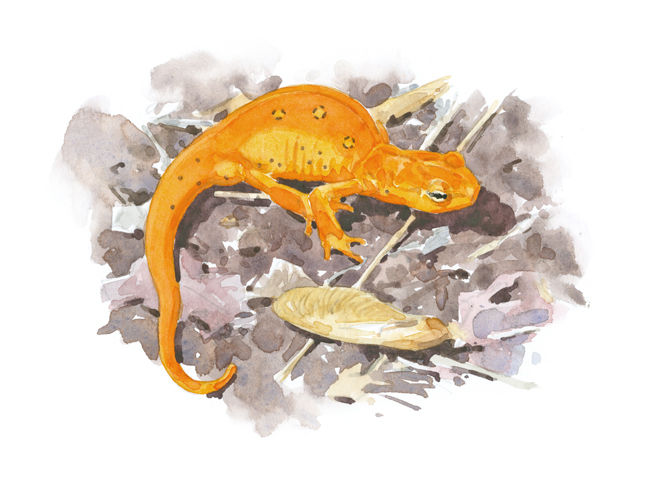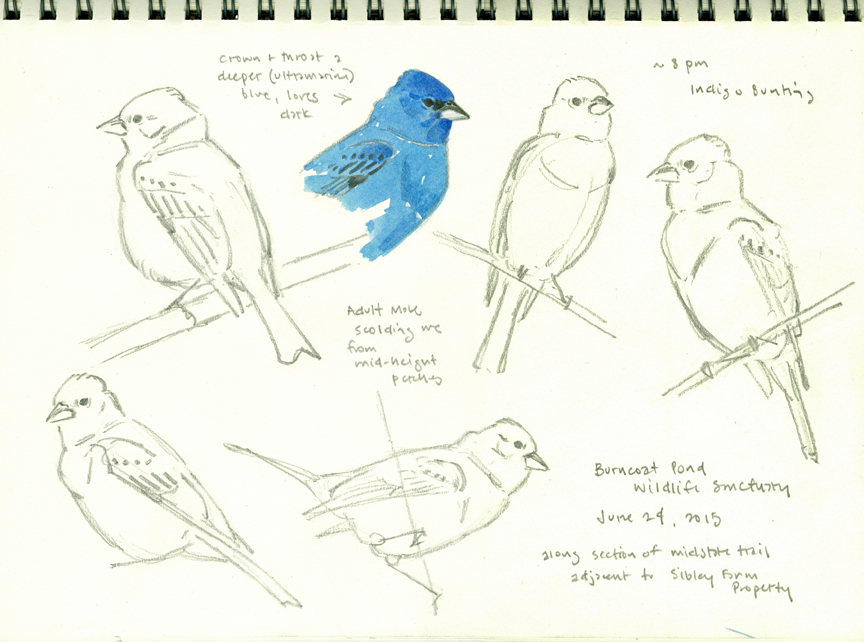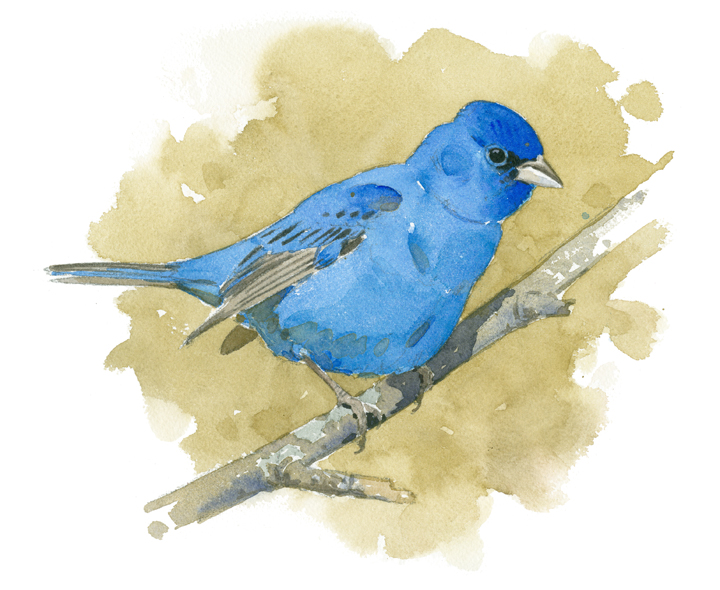This is from a series of posts by MABA resident artist Barry Van Dusen
Burncoat Pond Wildlife Sanctuary, Spencer on June 24, 2015
Everything was wet on the Flat Rock Trail when I started out this morning. Heavy thunderstorms the previous evening had supplied the area with some much needed moisture. The dampness brought out frogs and salamanders, and I found several lovely red efts along the trail, one of which I decided to paint. Note the winged maple seed (or samara), which gives a sense of scale.
Views of Burncoat Pond proved challenging, with only a few points along the shore allowing any access, but I started a watercolor nonetheless. My view was looking down into a marshy bay of the lake, through a screen of dead timber. It was a complicated scene. Too complicated, as it turned out! I couldn’t manage to resolve the special relationships, and about halfway into the painting realized that it was going nowhere. I put it away, deciding not to waste any more time on it. Not all field paintings work out, and sometimes the trick is knowing when to quit!
I headed back to the parking area for lunch. I had noticed on my way to the pond that the large meadows around the parking area were rich in birds, and I wanted to spend more time there. While eating lunch under a big sugar maple near the parking area, a bird flew into the branches over my head. Something about the bird looked interesting, but I couldn’t locate it among the sugar maple leaves. Finally, it flew to an oak across the road and I quickly got my scope on it – a black-billed cuckoo!
Good looks at cuckoos never seem to last very long, and this one was no different- giving me just one good look before it disappeared. I rarely try to develop a painting from such a brief look, but the impression I’d had was a strong one, so I scribbled some lines in my sketchbook to get down as much as possible of what I remembered. Then I took out a sheet of watercolor paper and sketched the oak branches where the bird had been sitting (the branches were still in my scope view). Later, back in the studio, I refined my drawing and finished the piece. I’ve learned that it’s sometimes good to force myself to work from memory – it has a way of distilling and intensifying a field experience!
Hiking up the section of mid-state trail a short ways, I got much longer looks at an indigo bunting. I must have been near a nest, because the male circled and scolded me from low perches along the trail. I did a page of studies, and later, a small watercolor in my studio.
In good light, the blue of an indigo bunting is unearthly! I found that the best mixture was Thalo blue (a very strong, staining blue) softened with just a touch of ultramarine. The darker blue on the bird’s head and shoulder is pure ultramarine. A background wash mixed from raw sienna and ivory black intensifies the bird’s color.





